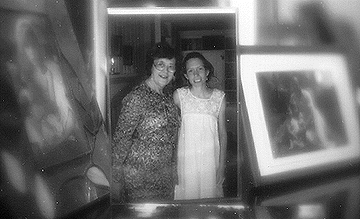
The University of Chicago Magazine
February 1997

Continued

A photograph of Bethann with her mother, Evelyn, is part of the Lantos family gallery.
just as we do things our forebears would have found miraculous. And yet, today's doctors do some of the same things that doctors have always done and will always continue to do. That permanence has nothing to do with science, with technology, with whether we work in fee-for-service solo practices, HMOs, the British National Health Service, or the VA. It doesn't have much to do with tort reform, managed care, or "safe havens" from conflict-of-interest legislation. And it doesn't even have much to do with whether what we do works or doesn't. Instead, the hard-rock core of medicine will always come down to whether, like William Carlos Williams, we nurture the capacity to respond to "the haunted look we get from some patient's eyes."
When I left the White House reception, I headed straight for the Farragut North Metro stop. I had to get to the airport and back to real life. I had patients to see the next day in my clinic for children with chronic disease, my clinic for the incurables.
At the top of the escalator, a beggar asked me for change. I reached in my pocket and found the M&Ms, and handed them to him.
"Bill Clinton just gave me these," I said, "Hang on to them. They'll be valuable someday."
His eyes were filled with anger and resignation. The hopes that I'd raised by reaching into my pocket had been dashed when I pulled out something other than money. But not dashed completely. What was I offering? Was I making fun of him?
Along with the anger and the resignation, there was a flicker of hope. Improbably, he still wanted to connect.
"Look, man," I said, "It's got the Presidential Seal on it."
He looked at the box, at me, back at the box. I tossed it to him. He mumbled, "Thanks, man."
I stepped on the escalator and slowly descended.
Return to opening of, "Life Support."
Go to:
- INVESTIGATIONS
- CHICAGO JOURNAL
- EVENTS
- LETTERS
- CHICAGOPHILE
- Feature story, "LIFE SUPPORT"
- Feature story, "Brushes with perfection"
- Feature story, "Opening Chapters"
- Feature story, "Astronomical Figures"
- CLASS NEWS
- DEATHS
- BOOKS BY ALUMNI
- IN THE CLUBS
Return to February 1997 Table of Contents